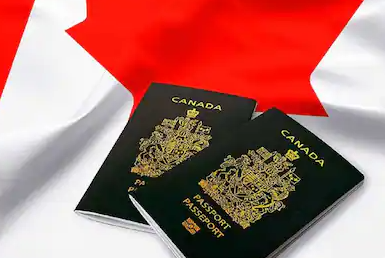Boating is an incredible way to enjoy the great outdoors, whether you’re fishing, cruising, or just soaking in the sun. However, with the joy of being on the water comes responsibility. Boating safety isn’t just a set of guidelines—it’s essential for protecting you, your passengers, and other boaters. Did you know that most boating accidents are preventable? According to the U.S. Coast Guard, nearly 80% of boating fatalities involve drowning, with the majority of victims not wearing life jackets. Let’s dive into some crucial boating safety tips to ensure your time on the water is both fun and safe.
Understanding Boating Safety Regulations
Before hitting the water, it’s vital to understand the rules that govern boating. Federal and state regulations set the standards for boating safety, and knowing these can help you avoid fines or accidents. Most states require a boating safety certificate, which can be obtained by completing a boating safety course. These courses cover everything from navigational rules to emergency response, making them a great investment for new and experienced boaters alike.
Essential Boating Safety Equipment
Every boater should have essential safety equipment on board. Key items include:
- Life Jackets and Personal Flotation Devices (PFDs): Ensure you have a life jacket for each person on board. It’s not just about having them; make sure they fit correctly and are in good condition.
- Fire Extinguishers and First Aid Kits: These are crucial for handling emergencies, such as onboard fires or minor injuries.
- Navigation Lights and Sound Signaling Devices: Proper lighting helps other boaters see you, especially in low visibility conditions, while signaling devices like horns or whistles can alert others to your presence.
Pre-Departure Checklist
Before you leave the dock, conduct a thorough inspection of your boat. This checklist will help you avoid mishaps:
- Inspecting the Boat for Safety: Check the hull, steering, and throttle controls to ensure everything is working correctly.
- Checking Weather Conditions: Weather can change quickly on the water. Always check forecasts and be prepared to change plans if conditions look unfavorable.
- Fuel and Engine Checks: Ensure you have enough fuel for the trip, and inspect the engine for leaks or mechanical issues.
Wearing Life Jackets: A Must-Do
Life jackets are non-negotiable when it comes to boating safety. Many boating accidents happen so quickly that there’s no time to grab a life jacket in an emergency. Choose a life jacket that fits well and suits the activity you’re engaging in—whether it’s waterskiing, fishing, or leisurely cruising.
Navigational Rules and Safe Boating Practices
Just like roads have traffic rules, waterways have their own set of navigational guidelines. Understanding these rules can help prevent collisions and other dangerous situations:
- Understanding the “Rules of the Road” on Water: Learn the basics of right-of-way, such as who has the priority when crossing paths or overtaking another vessel.
- Right of Way Rules for Boaters: Larger vessels often have limited maneuverability and thus have the right of way. Always be aware of your surroundings and respect other boats.
Avoiding Boating Under the Influence (BUI)
Boating under the influence is as dangerous as driving under the influence. Alcohol impairs your judgment, reaction time, and ability to operate the boat safely. Not only is it illegal, but it’s also one of the leading causes of boating accidents.
Proper Boat Loading and Weight Distribution
Improper loading and weight distribution can lead to capsizing. Always distribute weight evenly, keeping heavy items low and centered. Avoid overloading the boat beyond its capacity.
Handling Emergency Situations
Emergencies can happen, even with the best preparation. Here’s how to handle some common ones:
- Man Overboard: If someone falls overboard, immediately stop the boat and keep the person in sight. Use a life ring or throwable flotation device to help them back on board.
- Handling Capsizing or Boat Swamping: Stay with the boat if it capsizes, as it’s easier to spot than a person in the water. Use distress signals to call for help.
Understanding Weather and Water Conditions
Weather is one of the most unpredictable aspects of boating. Understanding weather patterns and how they affect water conditions is crucial:
- Reading Weather Forecasts: Use marine forecasts to check for wind, storms, and temperature changes that could impact your trip.
- Dealing with Rough Waters and Waves: Slow down in rough waters and approach waves at an angle to minimize the impact.
Anchoring Your Boat Safely
Anchoring is more than just dropping a hook into the water. Proper anchoring keeps your boat in place and prevents drifting into dangerous areas.
- How to Anchor Correctly: Choose the right anchor for the seabed type and pay out enough rope or chain to hold the boat securely.
- Common Anchoring Mistakes: Avoid anchoring from the stern, as it increases the risk of capsizing.
Communicating Your Boating Plans
Always let someone know your plans before heading out. This could include your route, expected return time, and contact details. Use VHF radios to communicate with other boats or emergency services if needed.
Maintaining Your Boat Regularly
Regular maintenance is key to ensuring your boat is seaworthy. Routine checks on the engine, hull, and electrical systems can prevent breakdowns.
- Routine Maintenance Tips: Keep your boat clean, check for wear and tear, and replace parts as needed to keep it in top condition.
- Importance of Regular Boat Inspections: Regular inspections help identify potential issues before they become serious problems.
Teaching Kids About Boating Safety
Boating with kids can be a great experience, but it’s essential to teach them about safety. Start by making sure they wear life jackets and know basic safety rules, such as staying seated and not leaning overboard.
Conclusion
Boating safety is all about preparation, awareness, and responsible behavior on the water. By following these tips, you can ensure that your time on the water remains enjoyable and safe. Whether you’re considering an outboard for sale or simply ensuring your current equipment is in top condition, remember that safety isn’t just about checking off a list—it’s about fostering a mindset that prioritizes the well-being of everyone on board.
FAQs
- What is the most important piece of safety equipment on a boat?
Life jackets are the most critical safety equipment, as they can save lives in the event of an emergency.
- Do I need a license to operate a boat?
Requirements vary by state, but many require a boating safety certificate or license.
- How can I check the weather before going boating?
Check marine weather forecasts through apps, websites, or VHF weather channels.
- What should I do if my boat capsizes?
Stay with the boat, use distress signals, and try to climb onto the overturned hull if possible.
- Is boating under the influence a serious offense?
Yes, boating under the influence is illegal and dangerous, with severe legal and safety consequences.



